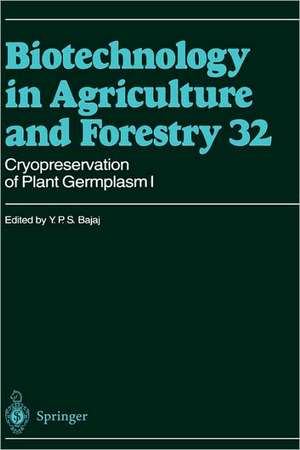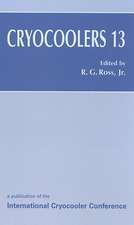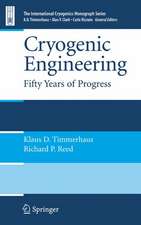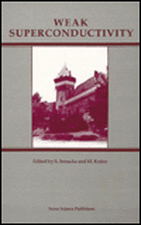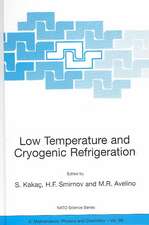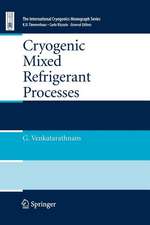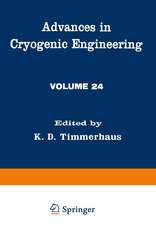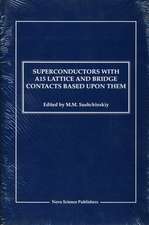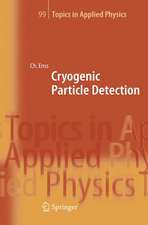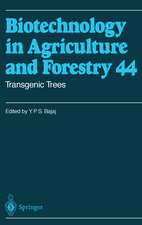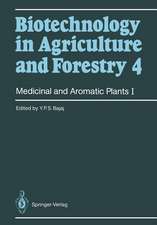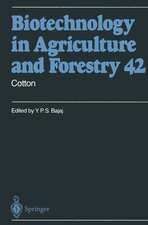Cryopreservation of Plant Germplasm I: Biotechnology in Agriculture and Forestry, cartea 32
Autor Y. P. S. Bajajen Limba Engleză Hardback – 29 sep 1995
| Toate formatele și edițiile | Preț | Express |
|---|---|---|
| Paperback (1) | 1827.17 lei 6-8 săpt. | |
| Springer Berlin, Heidelberg – dec 2010 | 1827.17 lei 6-8 săpt. | |
| Hardback (1) | 1833.48 lei 6-8 săpt. | |
| Springer Berlin, Heidelberg – 29 sep 1995 | 1833.48 lei 6-8 săpt. |
Din seria Biotechnology in Agriculture and Forestry
- 15%
 Preț: 655.60 lei
Preț: 655.60 lei - 18%
 Preț: 968.65 lei
Preț: 968.65 lei - 18%
 Preț: 1841.68 lei
Preț: 1841.68 lei - 18%
 Preț: 1843.11 lei
Preț: 1843.11 lei - 18%
 Preț: 1841.99 lei
Preț: 1841.99 lei - 18%
 Preț: 966.78 lei
Preț: 966.78 lei - 18%
 Preț: 958.73 lei
Preț: 958.73 lei - 18%
 Preț: 1832.39 lei
Preț: 1832.39 lei - 15%
 Preț: 658.22 lei
Preț: 658.22 lei - 18%
 Preț: 959.19 lei
Preț: 959.19 lei - 18%
 Preț: 1837.45 lei
Preț: 1837.45 lei - 18%
 Preț: 1837.88 lei
Preț: 1837.88 lei - 18%
 Preț: 961.41 lei
Preț: 961.41 lei - 15%
 Preț: 651.99 lei
Preț: 651.99 lei - 15%
 Preț: 645.79 lei
Preț: 645.79 lei - 15%
 Preț: 649.06 lei
Preț: 649.06 lei - 18%
 Preț: 1831.12 lei
Preț: 1831.12 lei - 18%
 Preț: 1839.50 lei
Preț: 1839.50 lei - 18%
 Preț: 1829.05 lei
Preț: 1829.05 lei - 18%
 Preț: 1834.77 lei
Preț: 1834.77 lei - 15%
 Preț: 650.19 lei
Preț: 650.19 lei - 18%
 Preț: 1828.74 lei
Preț: 1828.74 lei - 15%
 Preț: 668.04 lei
Preț: 668.04 lei - 18%
 Preț: 1831.60 lei
Preț: 1831.60 lei - 15%
 Preț: 648.89 lei
Preț: 648.89 lei - 18%
 Preț: 1831.73 lei
Preț: 1831.73 lei - 18%
 Preț: 1824.01 lei
Preț: 1824.01 lei - 18%
 Preț: 1829.36 lei
Preț: 1829.36 lei - 15%
 Preț: 644.82 lei
Preț: 644.82 lei - 18%
 Preț: 1828.60 lei
Preț: 1828.60 lei - 18%
 Preț: 1224.54 lei
Preț: 1224.54 lei
Preț: 1833.48 lei
Preț vechi: 2235.94 lei
-18% Nou
Puncte Express: 2750
Preț estimativ în valută:
350.88€ • 381.00$ • 294.74£
350.88€ • 381.00$ • 294.74£
Carte tipărită la comandă
Livrare economică 22 aprilie-06 mai
Preluare comenzi: 021 569.72.76
Specificații
ISBN-13: 9783540574514
ISBN-10: 3540574514
Pagini: 540
Ilustrații: XXII, 514 p.
Dimensiuni: 155 x 235 x 34 mm
Greutate: 0.93 kg
Ediția:1995
Editura: Springer Berlin, Heidelberg
Colecția Springer
Seria Biotechnology in Agriculture and Forestry
Locul publicării:Berlin, Heidelberg, Germany
ISBN-10: 3540574514
Pagini: 540
Ilustrații: XXII, 514 p.
Dimensiuni: 155 x 235 x 34 mm
Greutate: 0.93 kg
Ediția:1995
Editura: Springer Berlin, Heidelberg
Colecția Springer
Seria Biotechnology in Agriculture and Forestry
Locul publicării:Berlin, Heidelberg, Germany
Public țintă
ResearchCuprins
I.1 Cryopreservation of Plant Cell, Tissue, and Organ Culture for the Conservation of Germplasm and Biodiversity.- I.2 Cryopreservation of Recalcitrant Seeds.- II.1 Cryopreservation of Germplasm of Woody Plants.- II.2 Cryoconservation of Germplasm of Citrus.- II.3 Cryopreservation of Apple (Malus Species) Genetic Resources.- II.4 Cryopreservation of Germplasm of Mulberry (Morus Species).- I1.5 Cryopreservation and Minimum Growth Storage of Pear (Pyrus Species).- II.6 Cryopreservation of Germplasm of Walnut (Juglans Species).- II.7 Cryopreservation of Date Palm, Oil Palm, and Coconut.- II.8 Cryopreservation of Germplasm of Ornamental Palms (Veitchia, Howea, and Calamus Species).- II.9 Cryopreservation of Germplasm of Rubber (Hevea brasiliensis).- II.10 Cryopreservation of Germplasm of Larix and Picea Species.- II.11 Cryopreservation of Scots Pine (Pinus sylvestris L.).- III.1 Cryopreservation of Germplasm of Cereals (Wheat, Rice, and Maize).- III.2 Cryopreservation of Foxtail Millet (Setaria italica L.).- III.3 Cryopreservation of Some Halophyte Grasses (Puccinellia Species).- III.4 Cryopreservation of Germplasm of Sugarcane (Saccharum Species).- IV.1 Cryopreservation of Peanut (Arachis hypogaea L.) and Chickpea (Cicer arietinum L.).- IV.2 Cryopreservation of Alfalfa (Medicago sativa L.) and Clovers (Trifolium Species).- IV.3 Cryostorage of Pea (Pisum sativum L.).- IV.4 Cryopreservation of Brassica Species.- V.1 Conservation of Germplasm of Kiwifruit (Actinidia Species).- V.2 Cryopreservation of Asparagus.- V.3 Cryopreservation of Germplasm of Sugarbeet (Beta vulgaris L.).- V.4 Conservation of Germplasm of Strawberry (Fragaria Species).- V.5 Cryopreservation of Germplasm of Tomato.- V.6 Cryopreservation of Germplasm of Banana and Plantain (Musa Species).- V.7 Cryopreservation of Germplasm of Potato (Solanum tuberosum L.) and Cassava (Manihot esculenta Crantz).- VI.1 Cryopreservation of Germplasm of Medicinal and Aromatic Plants.- VI.2 Cryopreservation of Anisodus Species.- VI.3 Cryopreservation of Germplasm of Chrysanthemums.- VI.4 Cryopreservation of Germplasm of Carnation (Dianthus caryophyllus L.).- VI.5 Cryopreservation Studies on Digitalis lanata (Foxglove).- VI.6 Cryopreservation of Germplasm of Dioscorea deltoidea (Medicinal Yam).- VI.7 Preservation of Cell Cultures of Lavandula vera (Lavender).
Textul de pe ultima copertă
Whole plants have been regenerated from isolated protoplasts, cells, tissues, and organs freeze-preserved in liquid nitrogen. Thus cryopreservation has proved to be an important tool for the storage and conservation of plant genetic resources.
Numerous experts have contributed to this volume, which is divided into the following sections: I Cryopreservation of Plant Cells, Tissues, Organs, and Seeds; II Tree species - Citrus, Malus, Morus, Pyrus, Juglans, Date-Palm, Oil Palm, Coconut, Veitchia, Howea, Calamus, Hevea, Larix, Picea, and Pinus; III Cereals and Grasses - Wheat, Rice, Maize, Setaria, Puccinellia, and Sugarcane; IV Legumes and Oilseed Crops - Arachia hypogaea, Cicer arietinum, Pisum sativum, Medicago, Trifolium and Brassica
Numerous experts have contributed to this volume, which is divided into the following sections: I Cryopreservation of Plant Cells, Tissues, Organs, and Seeds; II Tree species - Citrus, Malus, Morus, Pyrus, Juglans, Date-Palm, Oil Palm, Coconut, Veitchia, Howea, Calamus, Hevea, Larix, Picea, and Pinus; III Cereals and Grasses - Wheat, Rice, Maize, Setaria, Puccinellia, and Sugarcane; IV Legumes and Oilseed Crops - Arachia hypogaea, Cicer arietinum, Pisum sativum, Medicago, Trifolium and Brassica
